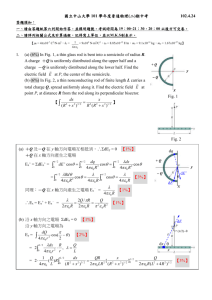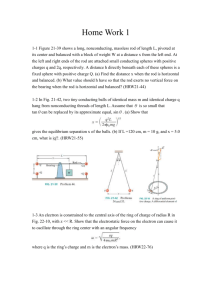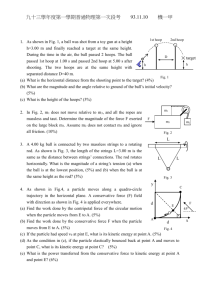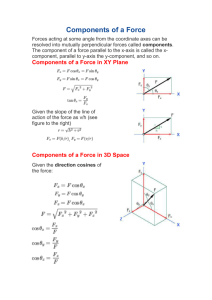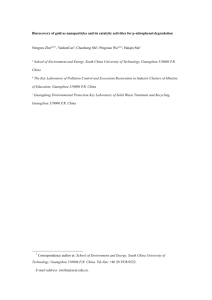Home Work Problem Set 9
advertisement
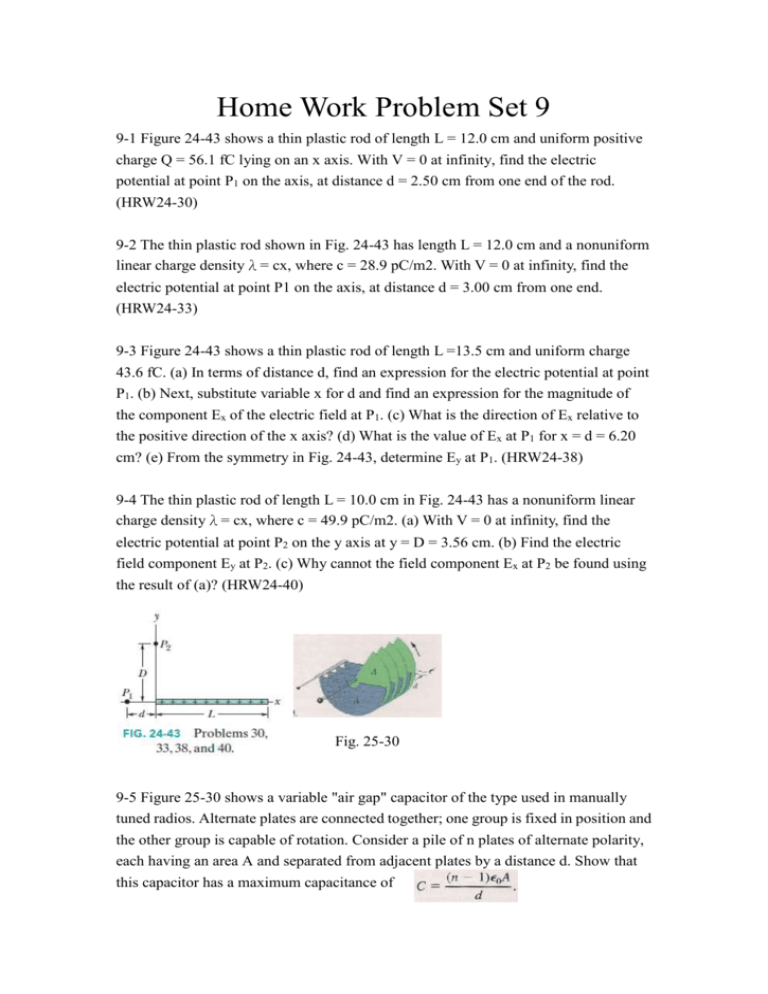
Home Work Problem Set 9 9-1 Figure 24-43 shows a thin plastic rod of length L = 12.0 cm and uniform positive charge Q = 56.1 fC lying on an x axis. With V = 0 at infinity, find the electric potential at point P1 on the axis, at distance d = 2.50 cm from one end of the rod. (HRW24-30) 9-2 The thin plastic rod shown in Fig. 24-43 has length L = 12.0 cm and a nonuniform linear charge densityλ= cx, where c = 28.9 pC/m2. With V = 0 at infinity, find the electric potential at point P1 on the axis, at distance d = 3.00 cm from one end. (HRW24-33) 9-3 Figure 24-43 shows a thin plastic rod of length L =13.5 cm and uniform charge 43.6 fC. (a) In terms of distance d, find an expression for the electric potential at point P1. (b) Next, substitute variable x for d and find an expression for the magnitude of the component Ex of the electric field at P1. (c) What is the direction of Ex relative to the positive direction of the x axis? (d) What is the value of Ex at P1 for x = d = 6.20 cm? (e) From the symmetry in Fig. 24-43, determine Ey at P1. (HRW24-38) 9-4 The thin plastic rod of length L = 10.0 cm in Fig. 24-43 has a nonuniform linear charge densityλ= cx, where c = 49.9 pC/m2. (a) With V = 0 at infinity, find the electric potential at point P2 on the y axis at y = D = 3.56 cm. (b) Find the electric field component Ey at P2. (c) Why cannot the field component Ex at P2 be found using the result of (a)? (HRW24-40) Fig. 25-30 9-5 Figure 25-30 shows a variable "air gap" capacitor of the type used in manually tuned radios. Alternate plates are connected together; one group is fixed in position and the other group is capable of rotation. Consider a pile of n plates of alternate polarity, each having an area A and separated from adjacent plates by a distance d. Show that this capacitor has a maximum capacitance of 9-6 A parallel-plate capacitor has plates of area A and separation d and is charged to a potential difference V. The charging battery is then disconnected, and the plates are pulled apart until their separation is 2d. Derive expressions in terms of A, d, and V for (a) the new potential difference, (b) the initial and final stored energy, and (c) the work required to separate the plates. 9-7 In earth's lower atmospheric there are negative and positive ions, created by radioactive element's in the soil and cosmic rays from space. In a certain region, the atmospheric electric field strength is 120 V/m, directed vertically down. This field causes singly charged positive ions, 620 per cm3, to drift downward and singly charged negative ions, 550 per cm3, to drift upward (Fig 27-24). The measured conductivity is 2.70 × 10-14/Ω.m. Calculate (a) the ion drift speed, assumed to be the same for positive and negative ions, and (b) the current density. Fig 27-24 Fig 27-25 9-8 A resistor has the shape of a truncated right-circular cons (Fig. 27-25). The end radii are a and b, and the altitude is L. If the taper is small, we may assume that the current density is uniform across any cross section. (a) Calculate the resistance of this object. (b) Show that your answer reduce to ρ(L/A) for the special case of zero taper (that is, for a = b).
